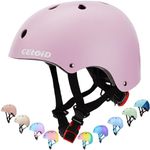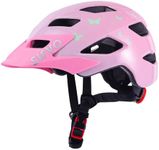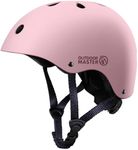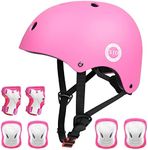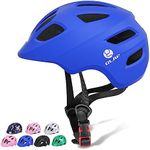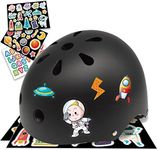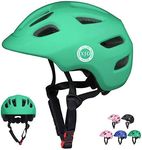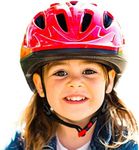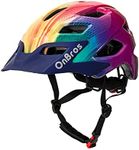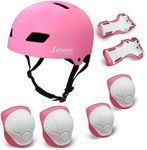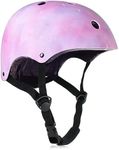Buying Guide for the Best Bike Helmet For Kids
Choosing the right bike helmet for kids is all about ensuring safety, comfort, and a good fit. A helmet is one of the most important pieces of safety gear for young cyclists, so it's crucial to pick one that meets safety standards, fits well, and is comfortable enough that your child will actually want to wear it. Understanding the key features and how they relate to your child's needs will help you make a confident and informed choice.Safety CertificationSafety certification refers to whether the helmet meets recognized safety standards, such as those set by organizations like CPSC or CE. This is important because it ensures the helmet has been tested for impact protection and overall safety. When looking at helmets, always check for a certification sticker inside the helmet. Never compromise on this—only choose helmets that are certified, as uncertified ones may not provide adequate protection.
Fit and SizingFit and sizing determine how well the helmet sits on your child's head. A helmet that is too loose or too tight won't protect properly and may be uncomfortable. Helmets usually come in sizes based on head circumference, measured in centimeters. To find the right size, measure your child's head just above the eyebrows and compare it to the helmet's size range. Some helmets have adjustable dials or pads to fine-tune the fit, which is great for growing kids. Always try the helmet on if possible, and make sure it sits level and snug without being uncomfortable.
VentilationVentilation refers to the number and placement of air holes in the helmet, which help keep your child's head cool. This is important for comfort, especially during warm weather or longer rides. Helmets with more or larger vents offer better airflow but may be slightly lighter in protection for very young or less active riders. For most kids, a helmet with a moderate number of vents strikes a good balance between comfort and safety.
WeightWeight is how heavy the helmet feels on your child's head. A lighter helmet is generally more comfortable, especially for younger children who may not be used to wearing one. However, very lightweight helmets may sometimes offer less coverage or fewer features. For most kids, a helmet that feels light but still sturdy is ideal. Try to have your child wear the helmet for a few minutes to see if it feels comfortable and not too heavy.
AdjustabilityAdjustability refers to features like adjustable straps, dials, or padding that help customize the fit of the helmet. This is important because kids grow quickly, and a helmet that can be adjusted will last longer and fit better. Look for helmets with easy-to-use adjustment systems that your child can manage themselves as they get older. Good adjustability ensures the helmet stays secure and comfortable as your child grows.
CoverageCoverage describes how much of the head the helmet protects. Some helmets offer more coverage at the back and sides, which can be especially important for younger or less experienced riders who may be more prone to falls. If your child is just learning to ride or tends to be adventurous, consider a helmet with extended coverage for extra protection.
Style and DesignStyle and design include the color, graphics, and overall look of the helmet. While this doesn't affect safety, it's important because kids are more likely to wear a helmet they think looks cool or matches their personality. Let your child have a say in the design, as this can encourage them to wear it every time they ride.

